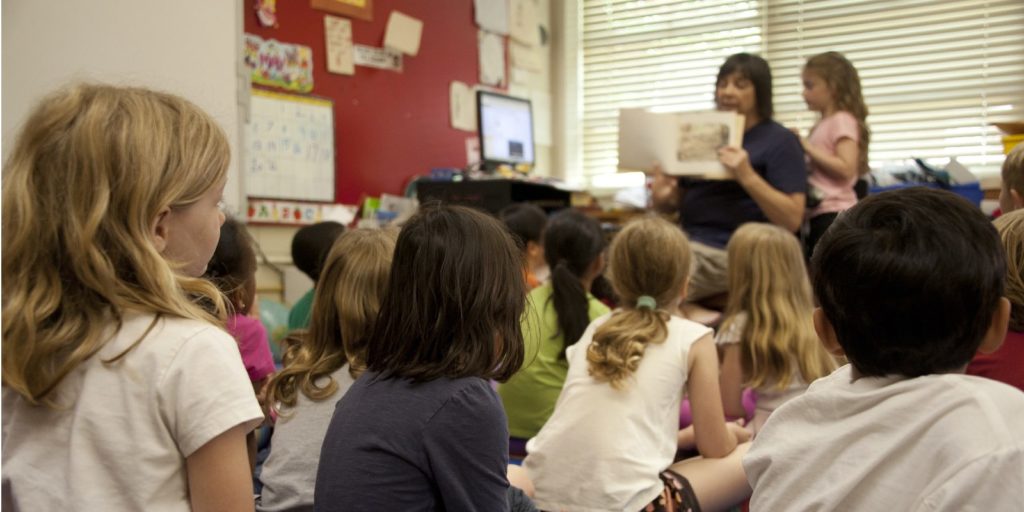By Matt Barnum, Chalkbeat |
In a sign of slow charter growth, feds may let states shift startup funds to help existing schools was originally published by Chalkbeat, a nonprofit news organization covering public education. Sign up for their newsletters here: ckbe.at/newsletters
Charter schools in several states may soon be able to tap into a new funding source to help cover coronavirus-related costs.
The U.S. Department of Education has indicated that it will allow states to repurpose money originally earmarked to help start new charter schools to instead help existing charter schools teach students remotely.
In a letter to the Florida Department of Education, obtained by Chalkbeat, assistant education secretary Frank Brogan approved the state’s request to redirect about $10 million to help new and existing charter schools “purchase the hardware and software necessary to enable all of their students to access curriculum and lessons from home.” Other states, including Colorado, Tennessee, and New York, have made similar requests.
The move is significant because it means charter schools may have an extra source of financial help at a moment when the economic downturn means state dollars are scarce. It’s also a sign of the times, indicating that the slowing pace of charter school growth has left start-up money unspent and that states are scrounging for extra dollars to help schools in the midst of this crisis.
The money in question is funding awarded to state education departments through the federal Charter Schools Program. States distribute that money to people and organizations starting new charter schools to help defray initial costs.
In just the last three years, 20 states have won hundreds of millions in promised federal funding through the program.
The idea of allowing states to use that money to help existing schools was raised in an April op-ed by Alex Medler, the executive director of the Colorado Association of Charter School Authorizers.
“There aren’t enough new schools being created across the country,” Medler said in an interview, “to spend all the CSP money on the one purpose of funding the start-up of new charters.”
Florida’s education commissioner Richard Corcoran was among the first to ask to redirect the funds. “Essentially, as public schools face a growing crisis from the threat of COVID-19 and increasingly plan for virtual instruction for the foreseeable future, the FDOE wants to equip all Florida charter schools that meet the federal definition of a charter school, to the extent possible, with a one-to-one student-to-device ratio,” he wrote to federal officials.
The money would come from the $10.8 million that remains of a $56 million federal grant issued in 2016. Corcoran said the state would prioritize charters with more students from low-income families and individual grants would “likely” be no more than $250,000.
Federal officials approved Florida’s request earlier this week. Brogan’s letter notes that the money must be used only for “the immediate educational needs of charter school students impacted by the COVID-19 national emergency,” and only to help with remote learning at charter schools “that demonstrate financial need.”
The federal statute authorizing the program grants DeVos broad authority to waive aspects of the program — but the funds must go to charter schools, and cannot go to traditional school districts.
Other states are seeking similar waivers: New York (seeking to repurpose $10.1 million), Tennessee ($8 million), and Colorado ($2 million). (A spokesperson for New York’s education department said it is seeking a waiver to help schools respond to the pandemic, not because the federal charter funds would otherwise go unspent.)
Those requests have not yet been approved, but the Florida decision offers an encouraging signal.
Angela Morabito, spokesperson for the U.S. Department of Education, said several other states had indicated interest. (A separate part of the federal Charter Schools Program gives money directly to charter networks, rather than states. Morabito said these grants would likely not be eligible for such a waiver.)
The Department’s decision to allow the repurposing of those federal grants is the latest in a series of responses to the pandemic that shut down virtually every public school in the country.
Some have won widespread support, including the swift decision to allow states to cancel annual testing this year. But in one particularly controversial move, Education Secretary Betsy DeVos issued guidance that pushed districts to effectively redirect relief dollars from public schools to private schools.
The Florida waiver, and potential charter funding waivers elsewhere, though, would not move money from type of school to another, only shift dollars from potential charter schools to existing ones.
Right now, Medler says the current pipeline of potential charter schools is limited, likely because of recent political trends and the pandemic.
Charter authorizers from around the country, he said, “report that schools that had been planning to open this fall, some of them have decided to wait a year, and that applicants who were thinking about applying have decided to wait.”
“It’s really hard to quantify that,” he said, “but to some degree, there’s likely to be a decrease in the number of new charter schools opening over the next few years.”
This story has been updated to include information on why New York has sought a federal waiver.
Chalkbeat is a nonprofit news site covering educational change in public schools.











More Stories
More West Virginia schools will participate in opioid abuse prevention program
Pennsylvania is increasingly underfunding special education, report finds
Memphis’ Kingsbury High School community steps up call for changes